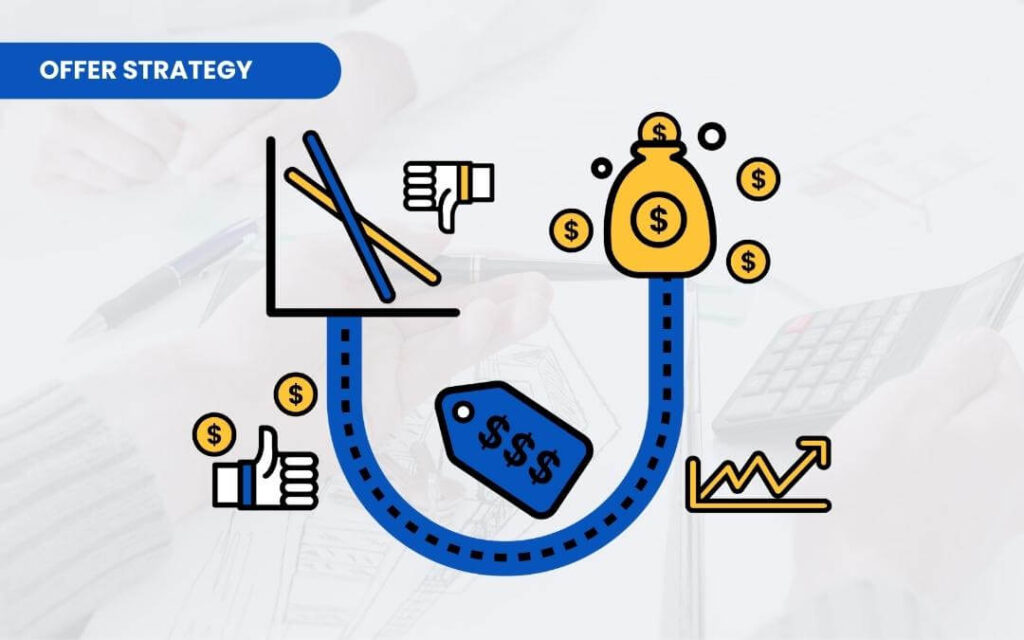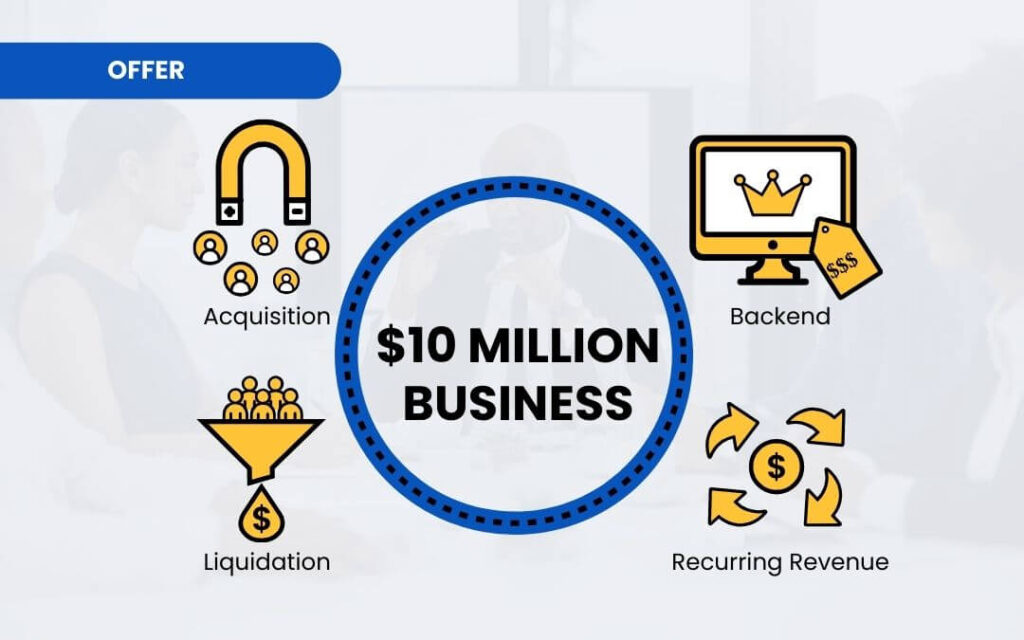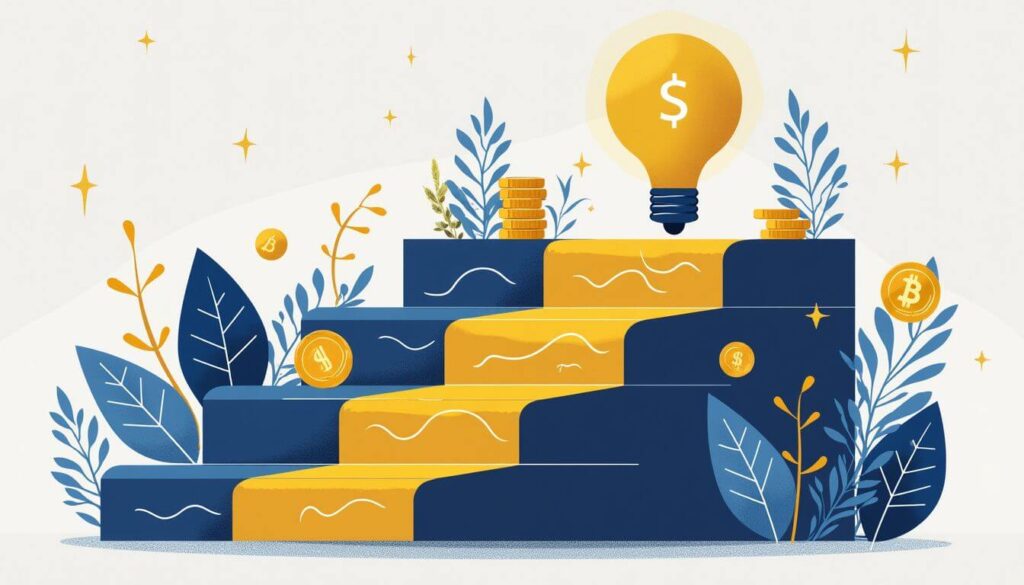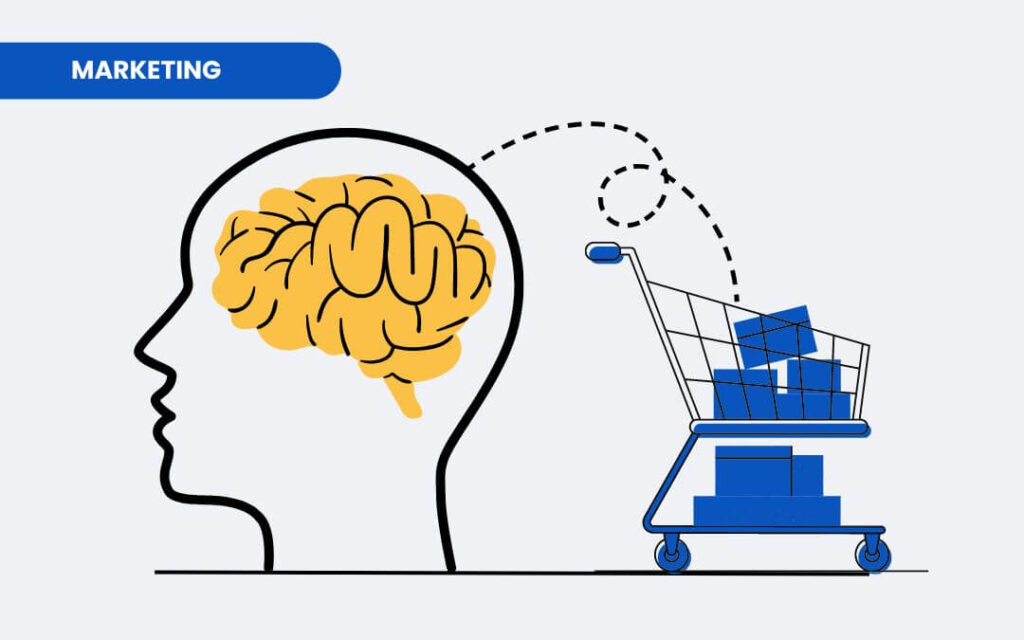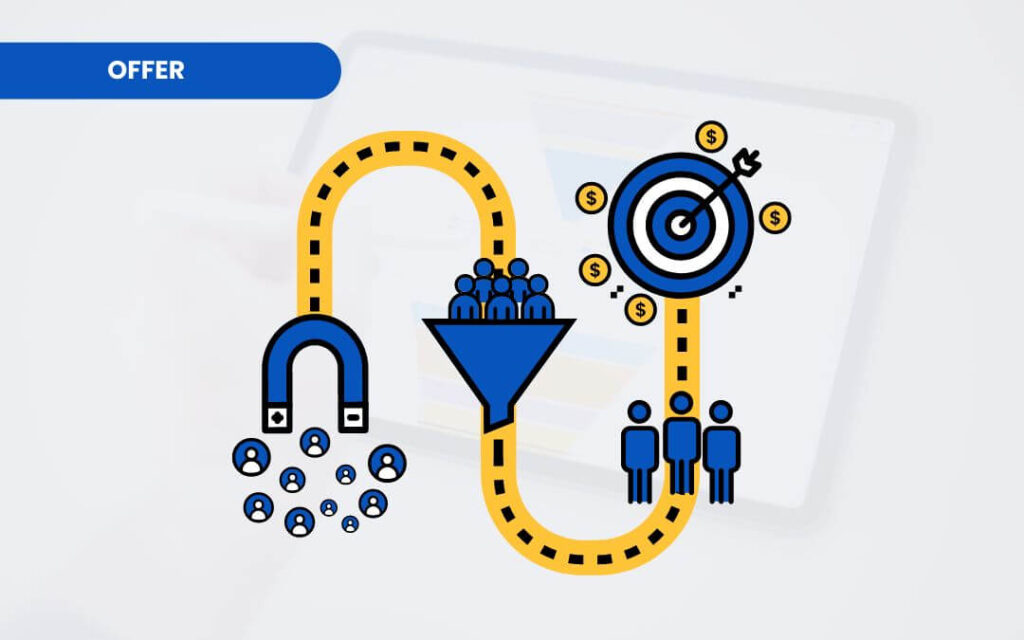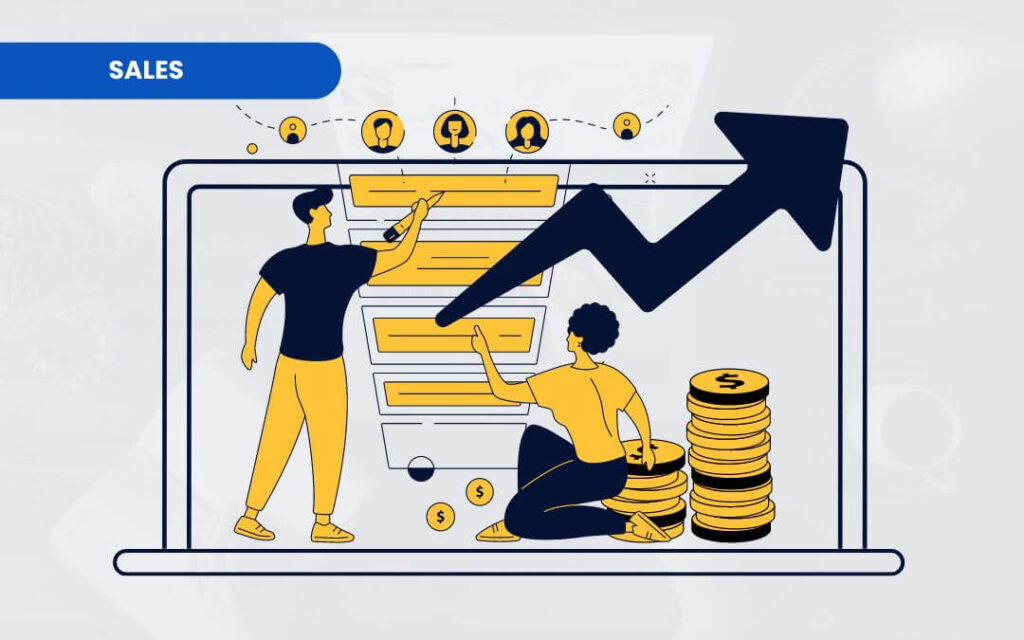Do you want to grow your business and achieve your goals?
Do you want to learn how to sell at a higher price without losing customers?
Do you want to find the optimal price point for your product or service?
Of course, you do!
In this post, we’ll cover the concept of price elasticity and how it affects your sales and profits. You’ll also learn how to overcome price resistance and use my very own tested strategies to sell at a higher price.
But before let’s explore price elasticity and why it matters.
What is Price Elasticity and Why Does it Matter?
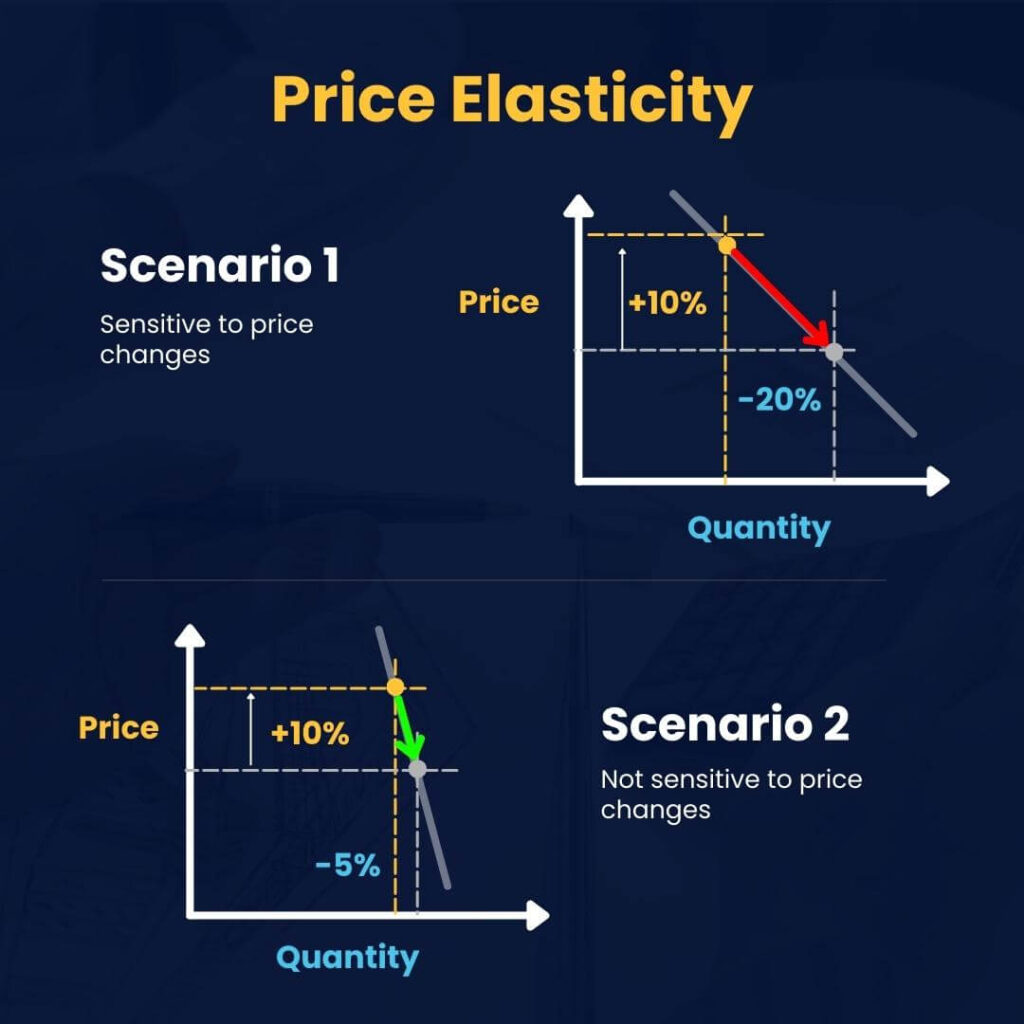
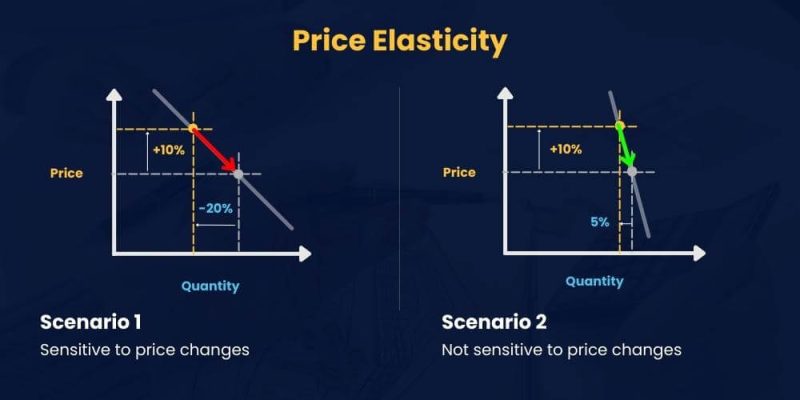
Price elasticity measures how sensitive consumers are to changes in prices. It tells you how much the quantity demanded for an offer fluctuates when its price changes.
For example…
If you increase the price of your product by 10% and the quantity demanded decreases by 20%, then your customers are highly sensitive to price changes and will buy less when prices go up.
On the other hand, if you increase the price of your product by 10% and the quantity demanded decreases by only 5%, then your audience is not as sensitive to price changes and the price increase will net more income.
Why is Price Elasticity Important for Your Business?
Price elasticity is all about figuring out how to price your products or services so you can maximize profit.
Elastic Demand
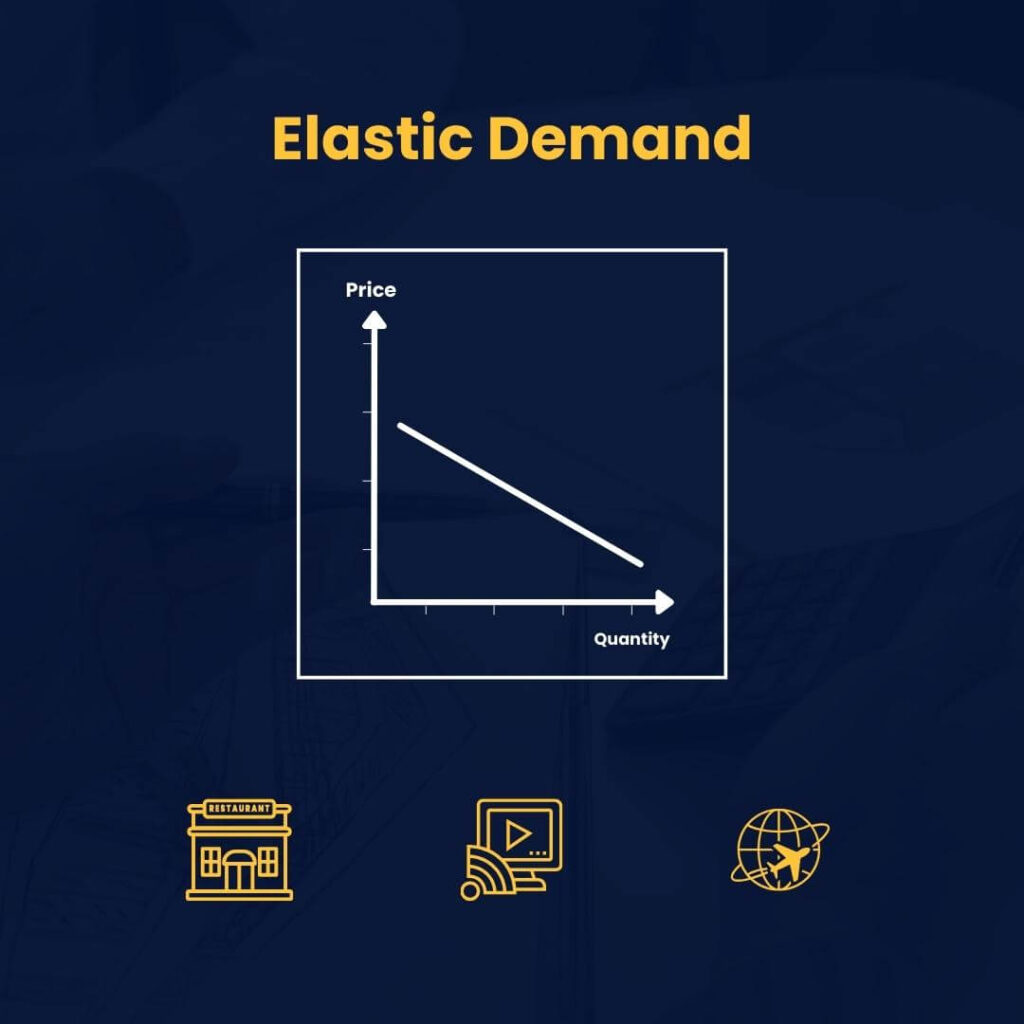
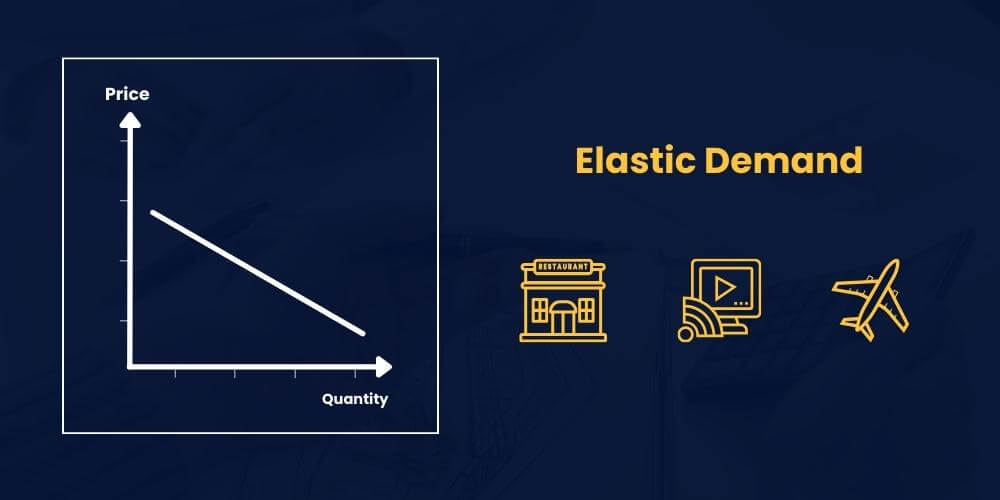
If demand is high for your offer and consumers buy more when you lower prices you have elastic demand.
Lowering the price in this case is likely to result in higher revenue if the extra sales outweigh the drop in price.
Good examples of businesses with elastic pricing strategies are restaurants, streaming services, and travel.
Inelastic Demand
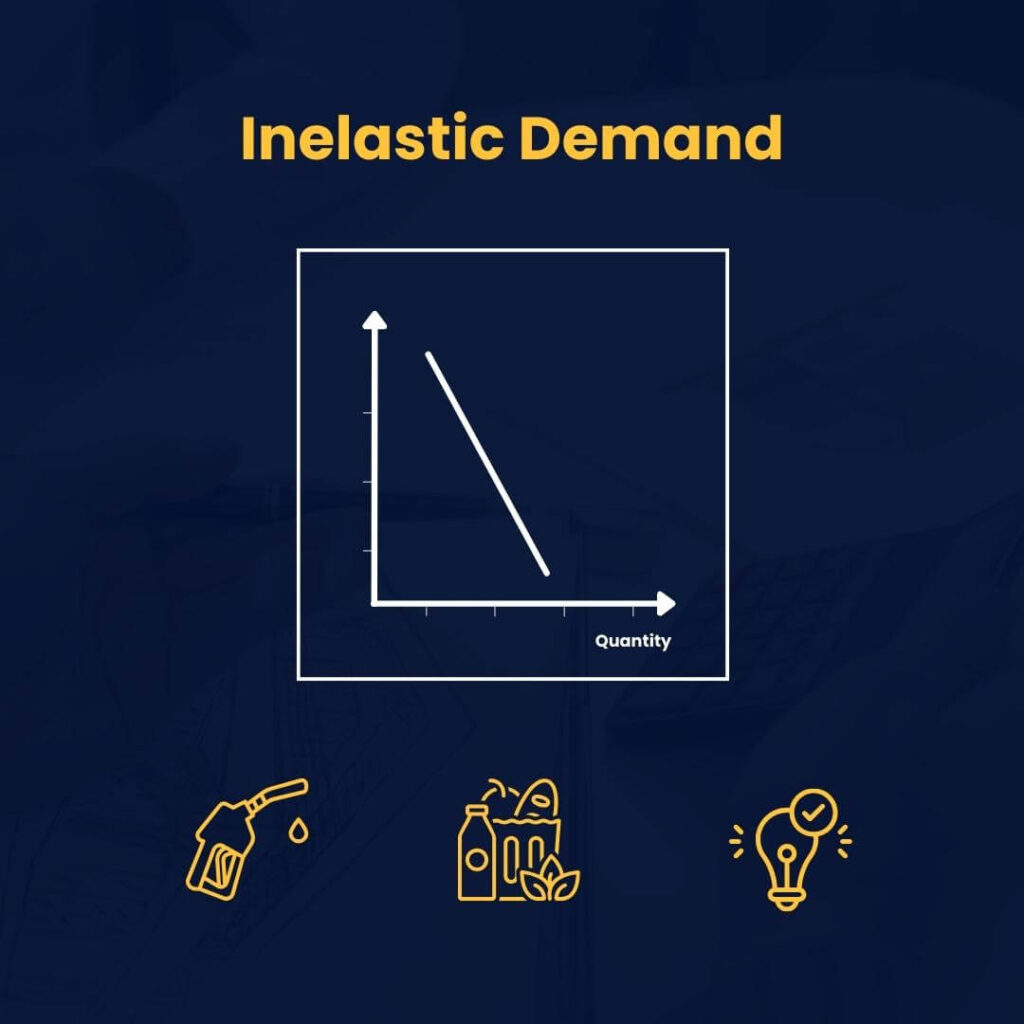
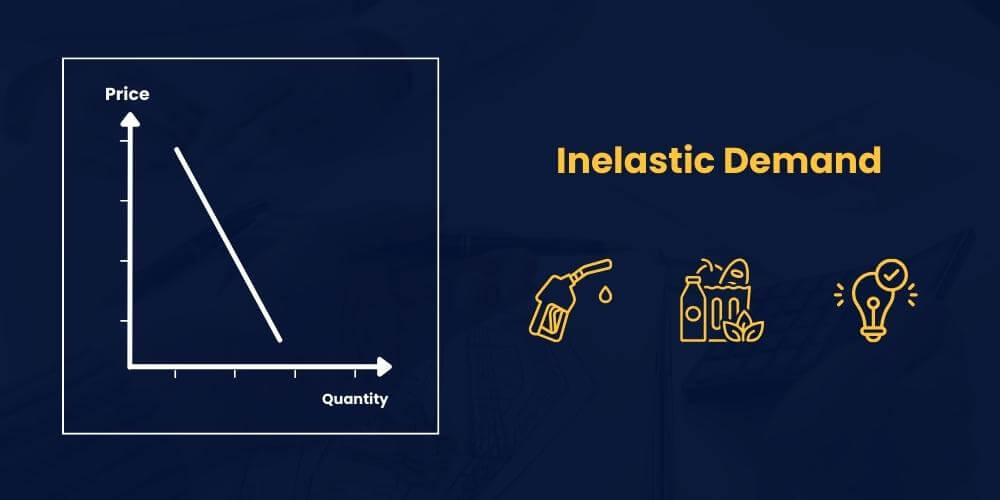
But what if your offer is so incredible that you make roughly the same number of sales at a higher price?
That’s inelastic demand which is what you want because you’re more likely to explode your revenue.
Good examples of products that enjoy inelastic demand are staples like gas, food, and electricity.
Factors Affecting Price Elasticity
If there are other offers out there similar to yours, the demand for your offer declines, and your pricing will be elastic.
Consumers can choose a different offer if your prices increase.
On the other hand, if your offer is specialized, solves particularly painful/expensive problems, or is necessary for your prospect to accomplish something desirable, you can likely raise prices because you enjoy inelastic demand.
What is Price Resistance and How to Overcome it?


Price resistance is the psychological barrier that prevents consumers from buying a product or service at a certain price point. It is influenced by many factors.
Some products or services are more prone to price resistance than others.
Luxury goods, discretionary items, or intangible services tend to face more resistance than essential goods, basic needs, or tangible products.
This is because consumers are more likely to question the necessity, quality, or value of these products or services.
Different segments of consumers have different levels of price sensitivity and willingness to pay.
Affluent customers, loyal customers, or niche customers tend to have less resistance than low-income customers, new customers, or mass-market customers.
This is because they have more disposable income, trust, or preference for these products or services.
The perceived value of an offer is the difference between the benefits that consumers expect to receive from it and the costs that they incur to obtain it.
The higher the perceived value, the lower the resistance. The lower the perceived value, the higher the resistance.
It’s vital to communicate the value proposition of your products or services clearly and effectively.
How to Find Your Optimal Price Point
In many cases, you can increase revenue by raising your prices even if your conversion rate goes down a little bit.
For example, let’s say you sell a product for $500 and convert at 5%.
Now, you raise your price to $1,000 and convert at 3.5%.
You DOUBLED your price and only experienced a 30% decrease in conversions.
That’s a win!
(Unless you’re in the game to get a volume of customers which I recommend against).
So, how do you find the optimal price point for your product or service?
The answer is by testing.
You need to test different prices and see how they affect your key metrics, such as:
– Conversion rate: The percentage of visitors who buy your product or service.
– Revenue: The total amount of money that you generate from sales.
– Profit: The difference between revenue and costs.
Run experiments and track your offer’s performance of different prices.
The goal is to find the price point that maximizes your revenue or profit (depending on your objective) while maintaining a solid conversion rate.
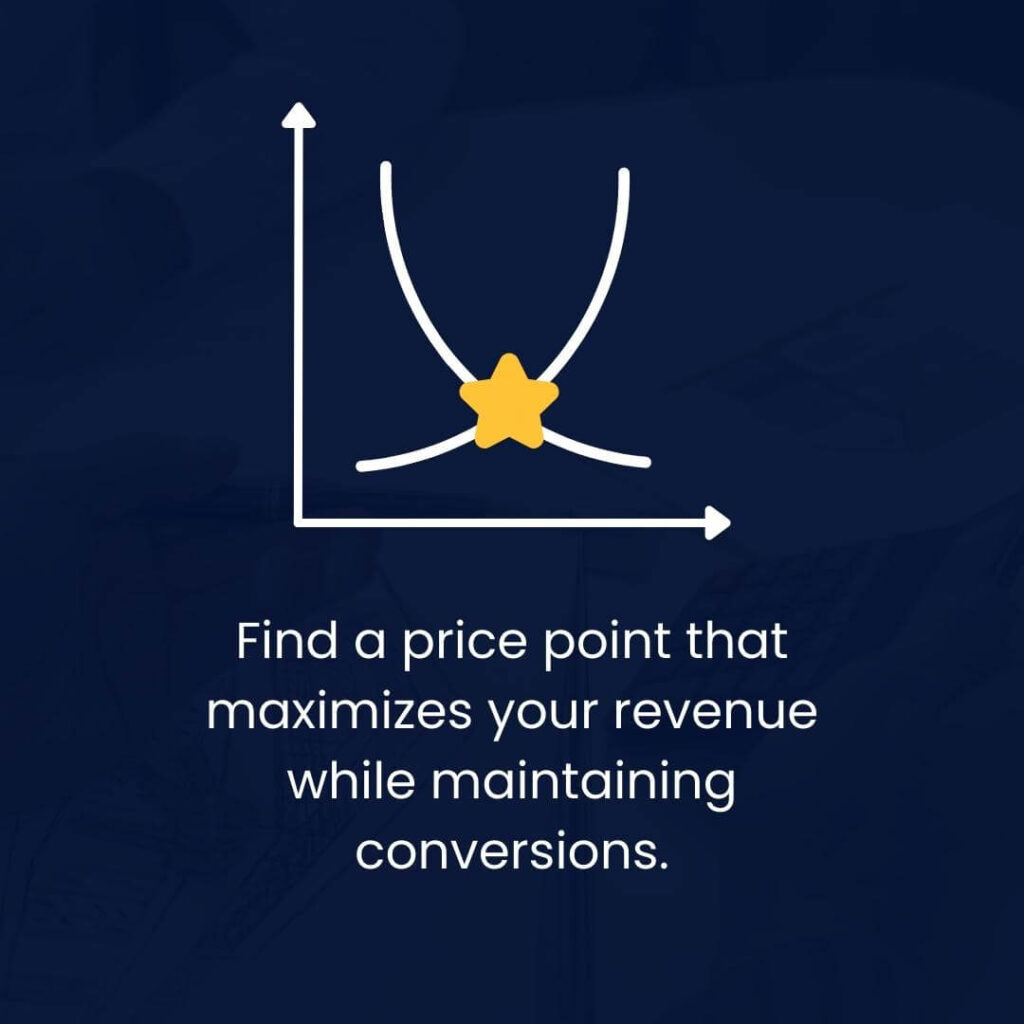

Continually adapt to changing market conditions and customer preferences so your pricing remains on point.
And test the limits of your pricing to find the best resistance points for your products or services
What are Resistance Points?
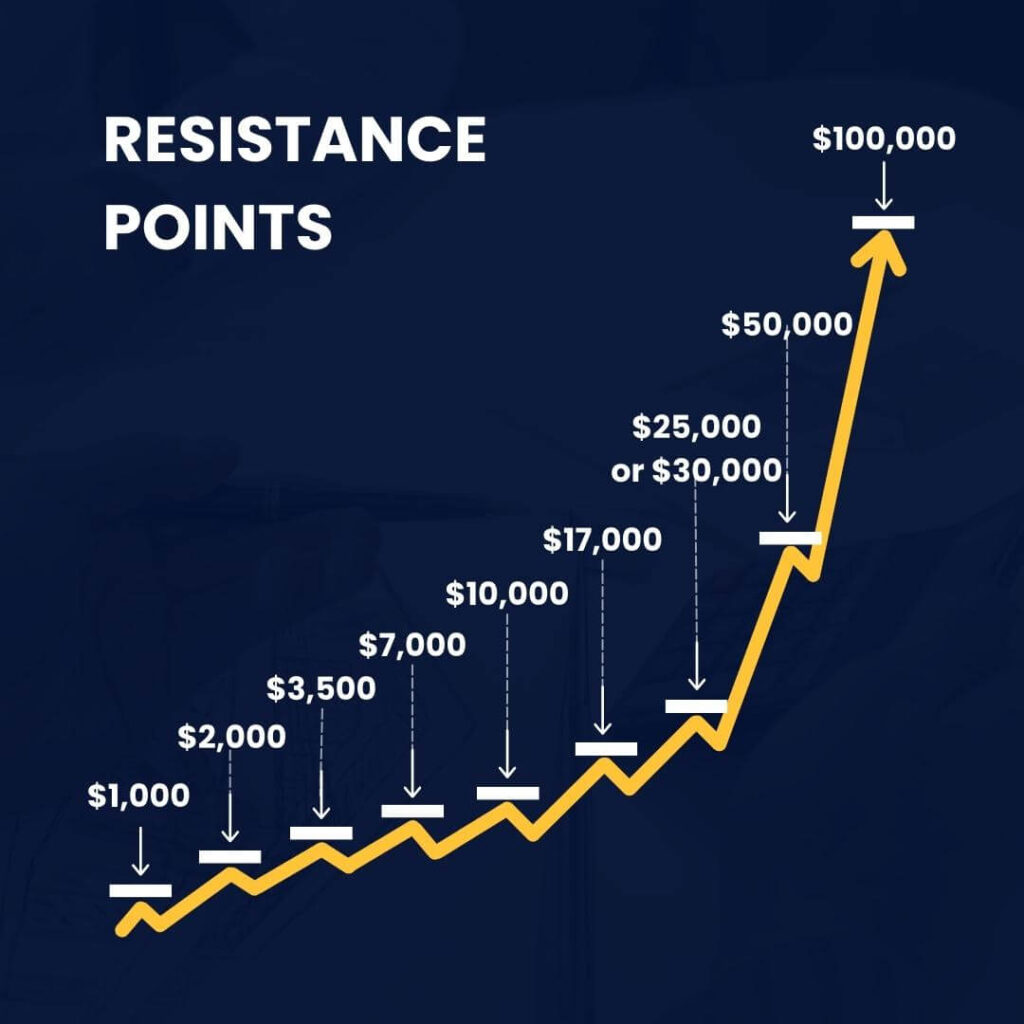
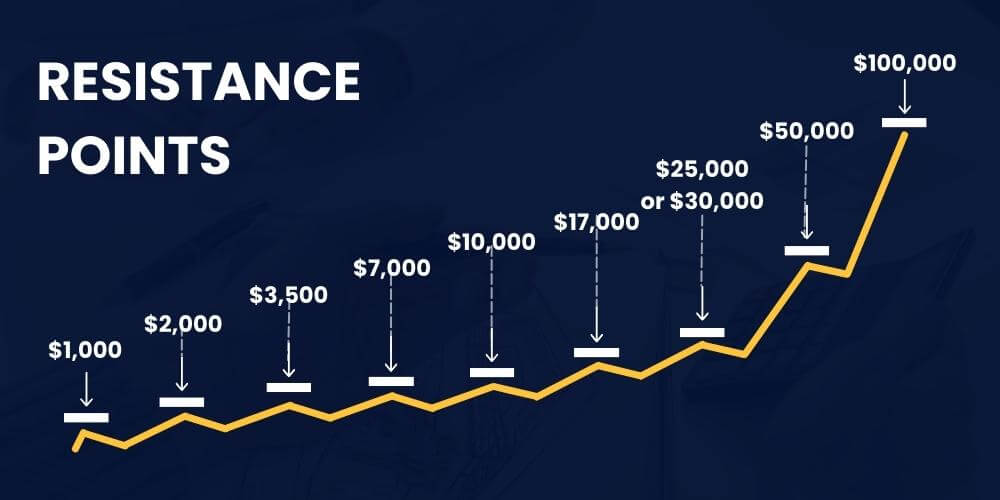
Resistance points are the prices that trigger a significant change in consumer behavior or perception. They are the thresholds that separate different levels of willingness to pay and demand elasticity.
For example, going from $500 to $1,000 may be a win if your revenue increases more than conversions decrease.
But, going from $500 to $1,500 may result in too steep a decline in conversions to justify the additional revenue.
You want to find your “resistance pricing.”
Typically…
High Prices = Good
Many Entrepreneurs struggle to charge higher prices because they fear their product is not good enough, their competition is too fierce, or their customers are all broke.
The truth is that your customers can afford way more than you think. And, actually, charging more is BETTER for them because you’ll be able to serve them better and they’ll, in turn, get better results.
Resistance points, then, are thresholds we have found in OUR niche with OUR offers and OUR brand
Your thresholds could be different.
You need to ultimately TEST them in YOUR niche with YOUR offers and YOUR brand to see what your specific thresholds are.
But I’m breaking down our findings to provide a model you can use to test your own pricing.
Price Resistance Point #1: $1,000
This is the first resistance.
I see a lot of marketers selling their offer for $500 when they could probably sell the same offer for $1,000 and come out ahead (without making significant changes to the offer itself).
Price Resistance Point #2: $2,000
$1,500 is a common price point that I see many marketers use, but they are missing out on a huge opportunity.
If they increased their price to $2,000, they would likely increase revenue.
Price Resistance Point #3: $3,500
$2,000 and $3,500 are two price points that many marketers get stuck in, but they are leaving a lot of money on the table.
If you’re selling between those prices, you should try raising your price to $3,500 and see what happens.
You might be surprised by how much more revenue you can generate.
Price Resistance Point #4: $7,000
This is a big jump from the previous threshold. I see a lot of people selling their offers for $5,000, but they are settling for less than they deserve.
I encourage you to test $7,000 and see where you land.
Price Resistance Point #5: $10,000
If you’ve crossed $7,000, it makes sense to test $10,000. But, to get to $10,000 from $7,000, your offer will likely need to be made much stronger.
Price Resistance Point #6: $17,000
This is one of the finicky resistance points we’ve found. It really depends on the offer.
Most of the time, we find $17,000 to be a good resistance point. This means, selling something for $15,000 may not be as effective as $17,000.
Price Resistance Point #7: $25,000 or $30,000
In our experience, $25,000 or $30,000 is the next resistance point depending on the offer. We’ve had success with both price points.
If your offer is amazing, try $30,000.
If your offer is good but maybe not amazing, you may find the resistance to be at $25,000.
Price Resistance Point #8: $50,000
Once we get past $25,000-$35,000, the next resistance point is usually $50,000.
This is a significant increase from the previous threshold, so you must ensure that your offer is worth it and that you can justify the value that you provide.
Price Resistance Point #9: $100,000
This is the biggest jump so far, but what we’ve found is that there’s no point in being between $50,000 and $100,000. The offer is going to perform best at one or the other. At this price, your offer needs to be mind-blowing anyways.
Also, you’re clearly selling to an audience with money at this point, so pricing your offer at $75,000 when you could sell it at $100,000 doesn’t make sense.
These are some of the resistance points that we have found in our testing. However, they are not universal or fixed. They will vary depending on your niche, your offer, and your brand. You need to test them for yourself and see what works best for you.
The key is to find the highest possible price that still converts well and maximizes your revenue or profit. You don’t want to leave money on the table by charging too little or lose customers by charging too much.
Test the limits of your pricing and find your optimal price point.
Your Next Steps to Optimal Pricing
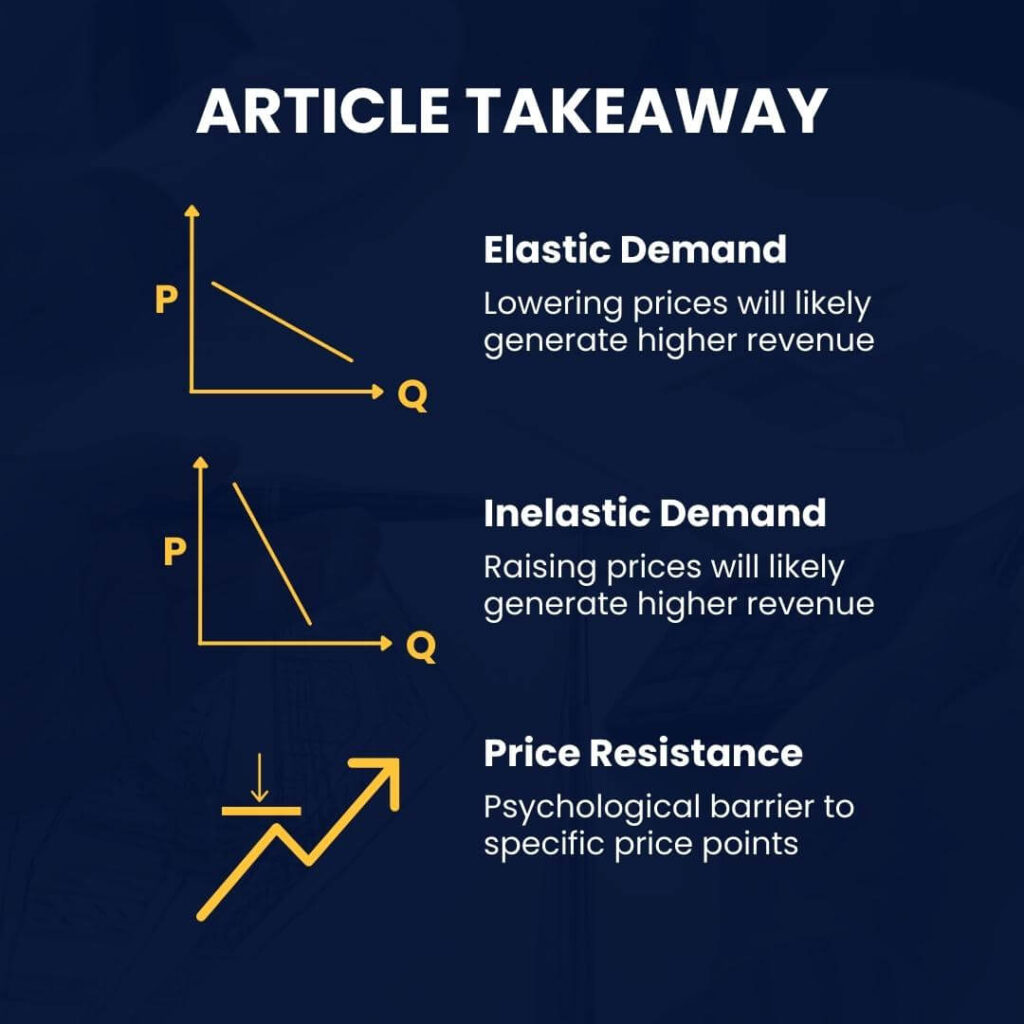

Understanding price elasticity and price resistance principles can help you craft, and test!, multiple price points with the end goal of increasing revenue.
Remember, pricing is not a one-time decision but an ongoing process that requires experimentation and learning.
If you’d like to get more insights like the ones shared in this post, join my FREE Expert Scale Facebook group.
Connect with like-minded entrepreneurs who are crushing it with their businesses and learn how to skyrocket your own business.
See you on the inside!


